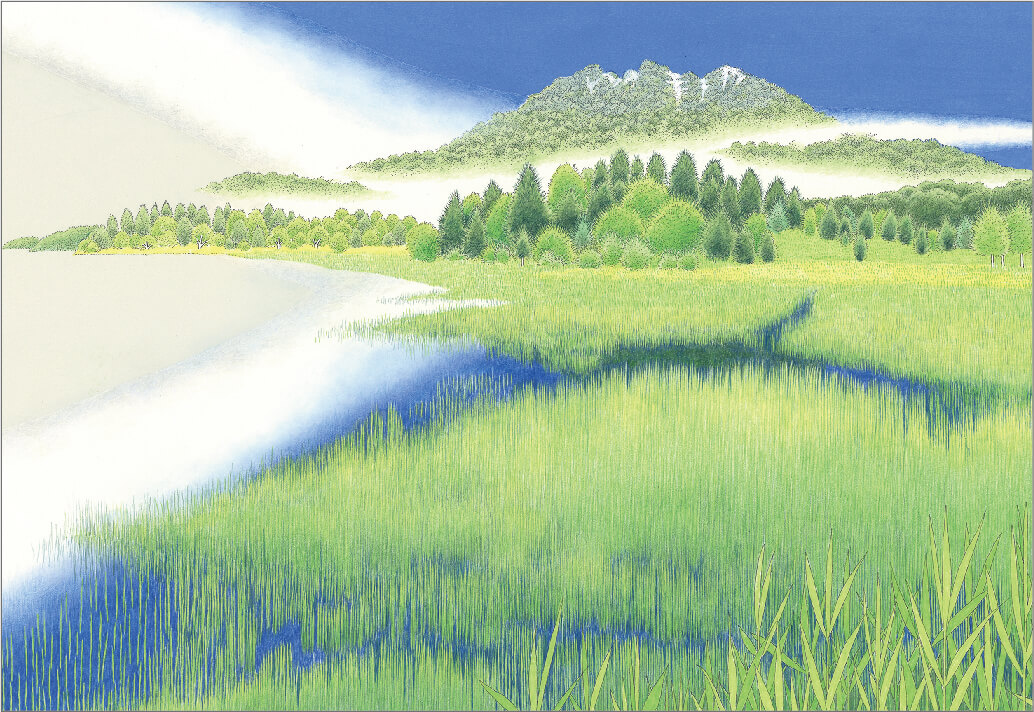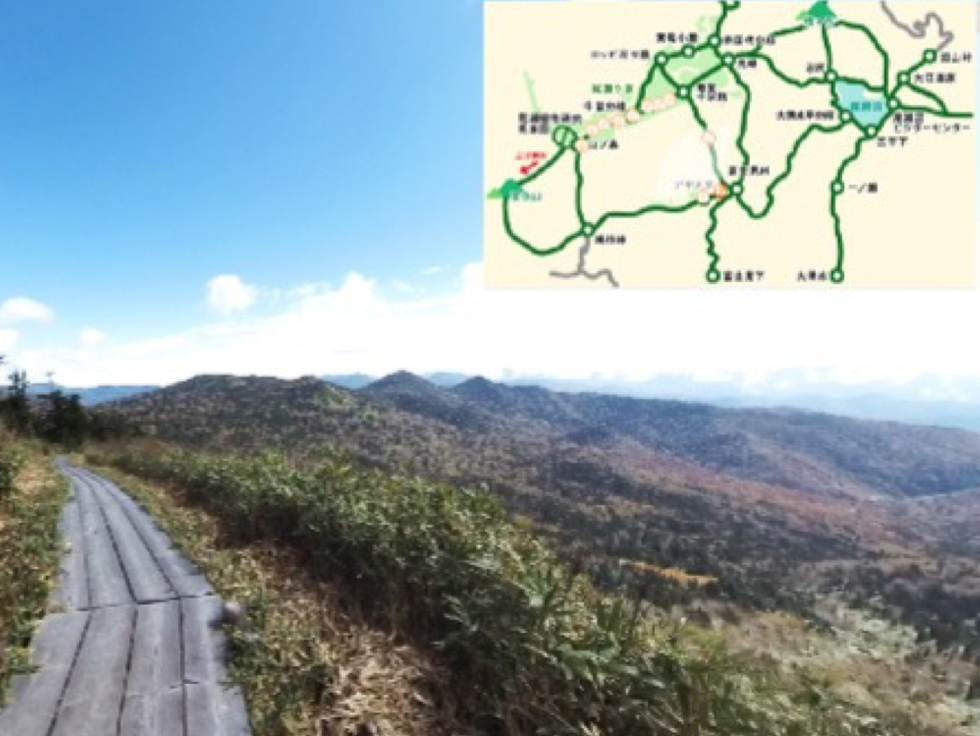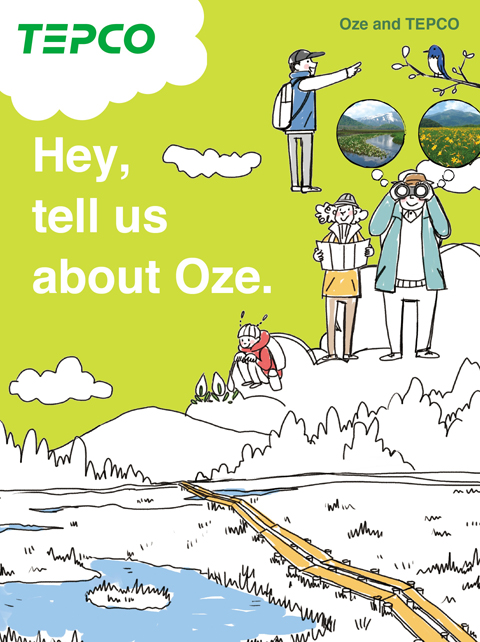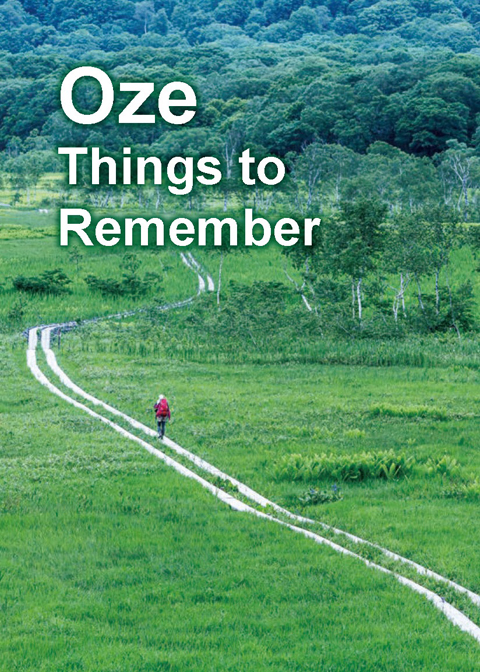Preserving OZE for Future Generations
Oze and TEPCO
The Oze National Park, which sprawls across four prefectures - Gunma, Fukushima, Niigata and Tochigi - is known for its well-preserved and vast yet delicate nature. Designated as a Special National Monument of Japan, Oze is also included in the List of Wetlands of International Importance under the Ramsar Convention. In the Taisho Era in the early 20th century, the electric power supplier to the area at that time acquired some land in Oze for generating electricity and that land was passed on to TEPCO when the company was founded.
For around 60 years since then, together with the local communities and our group company Tokyo Power Technology Ltd., we have been working to protect this natural environment as well as to provide visitors with opportunities to enjoy its nature. Our specific activities include restoration of the wetland vegetation, installing and maintaining wooden paths, building and managing public toilets and mountain lodges, and offering guided nature tours.
What is Oze?
Oze is a great storehouse of nature, both magnificent and subtle, located in the middle of Japan.
The many visitors are attracted and fascinated by the beautiful scenery during all the seasons(except for the winter closure period).
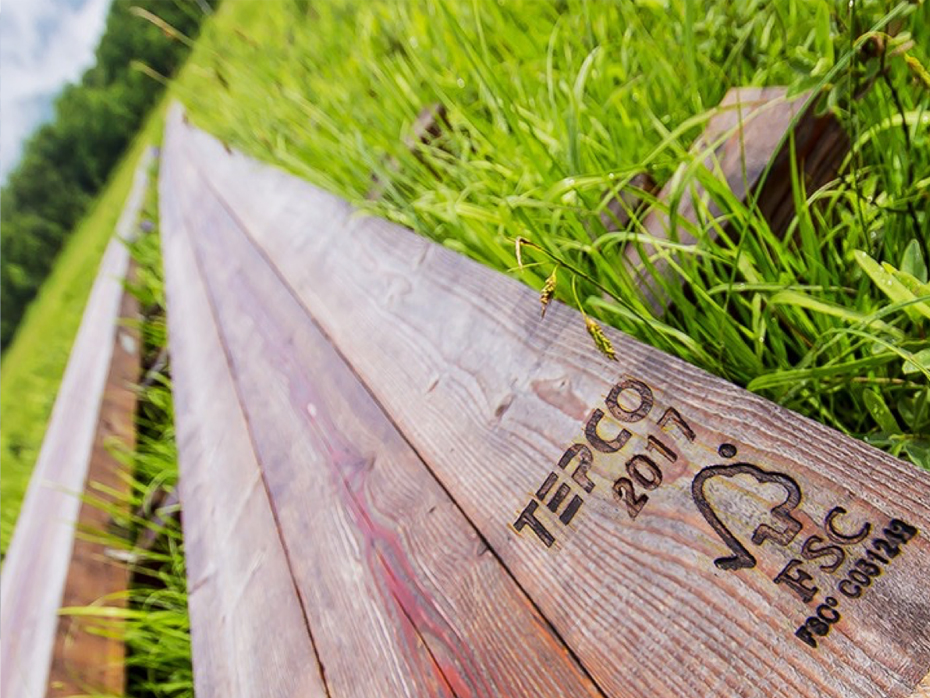
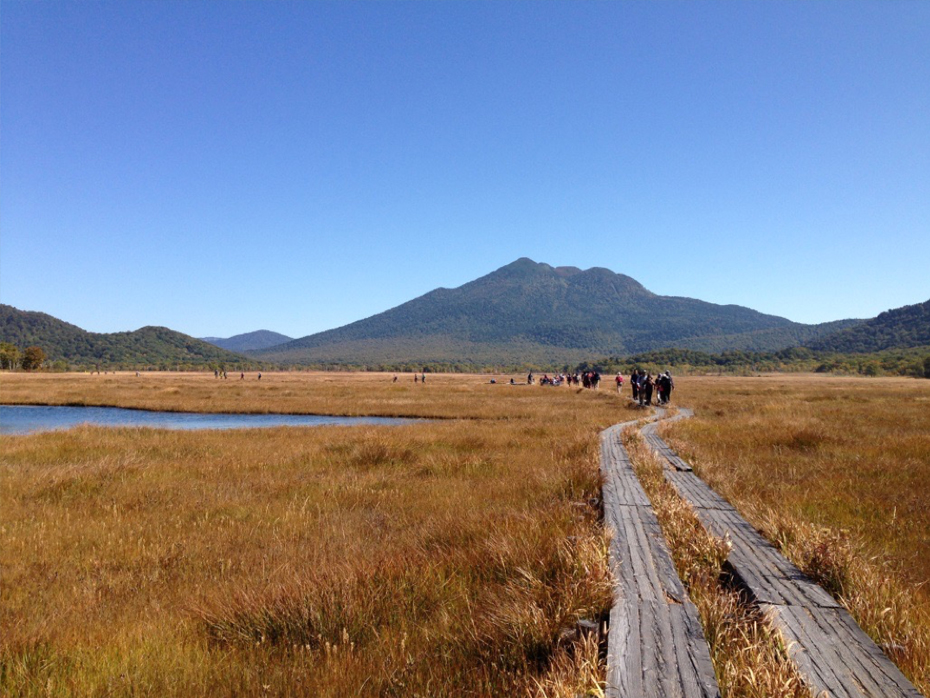
Access
There are three main routes for accessing Oze. You can enter from Gunma Prefecture through the Numata entrance, from Fukushima Prefecture through the Aizu entrance, and from Niigata Prefecture through the Echigo entrance. This page explains how to access Oze by use of public transport or your own car.
Oze View
Oze Movie
One of the great attractions of Oze is that no matter how many times you visit, you can always see different scenery depending on things like the season, weather, unusual natural phenomena, and even who you are visiting with.
Please enjoy this digital content on the charms and attractions of Oze.
Oze Art Gallery
Mr. Tesutaro Goso has expressed the foru seasons and flowers of changing OZE by an illustration.
